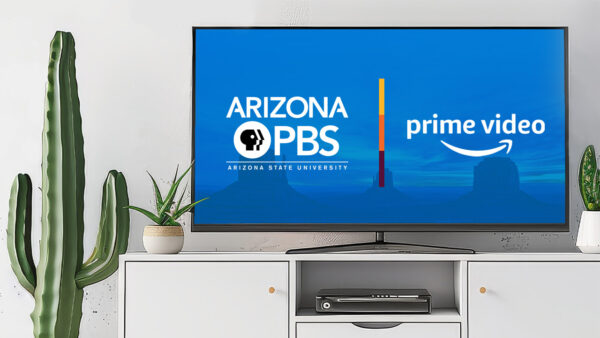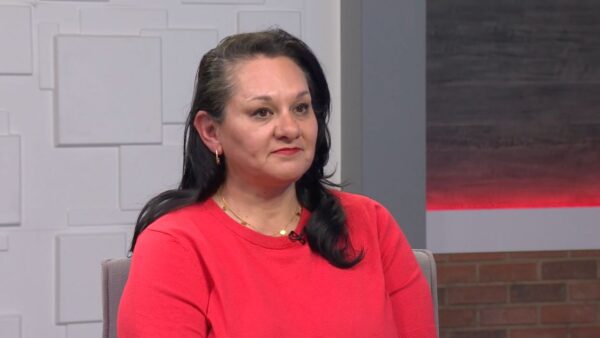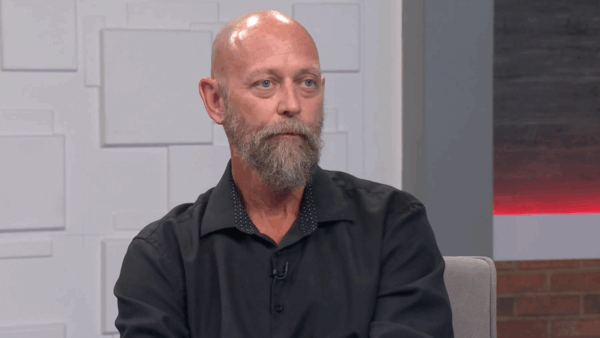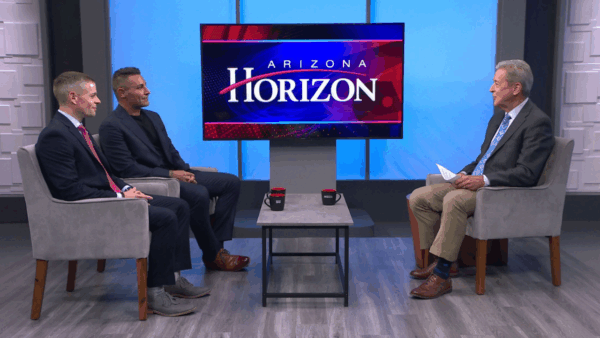How much does Arizona spend on public education? It depends on how you do the math. Comparisons of how much states spend, per pupil, on K-12 education often list Arizona at, or near, the bottom. Typically, Arizona is shown to spend around $6,000 per student compared to a national average of more than $9,000, but the Goldwater Institute is reporting that Arizona spends more than $9,500 per student.
Ted Simons:
How much does Arizona spend on public education? It depends on how you do the math. According to several sources, Arizona is at or near the bottom in national rankings for per pupil funding. Arizona spends about $6,000 per student compared to a national average of more than $9,000. Meanwhile, the Goldwater Institute puts Arizona's K-12 funding at about $9,500 per student. Here to explain the differences are Matthew Ladner, vice president of research for the Goldwater Institute, a conservative think tank. And Chuck Essigs of the Arizona Association of School Business Officials. Thank you both for joining us here on "Horizon."
Chuck Essigs:
Thank you.
Ted Simons:
All right, Matt, how much does Arizona spend per pupil in education and how did you get the number?
Matthew Ladner:
If you look at the superintendent's annual financial report it gives a total revenue from all sources of about $9.2 billion. You divide that by the number of kids. 950,000, you get 950 per -- it's a substantially higher number then gets reported.
Ted Simons:
I want to come back to that in a second. I want to ask you, how much?
Chuck Essigs:
We do spend $9,500 if you add in all of the things that get added in the report. But when you look at the national studies, education week, which is considered the gold standard for reporting, the American legislative exchange council, the N.E.A., all of those studies which look at all states, including Arizona, compares them on an apple to apple and orange to orange; Arizona is $6,200 to $6,500 per pupil for operational expenses. What drives the $9,500 is when you bring in capital expenses and self-insurance accounts and student funds and revenues that schools have but really aren't used on a day-to-day basis.
Ted Simons:
Is there a difference between capital expenditures and revenues and classroom teaching?
Matthew Ladner:
There is, now if you do the same procedure I described to you for charter schools, you look at their total revenue you get a figure $7,800 per pupil and that's the same all-in procedure. Public schools get, you know -- actually get state funding for facilities while charter schools don't. We use the facilities for an educational purpose. If school facilities are going to take funding they ought to count it in their expenditure per pupil.
Ted Simons:
Why not include that?
Chuck Essigs:
If you include that in the expenditures that others are reporting. If you want to take the figure for Arizona, which is still below the national average, if you bring in the capital expenditures we're still going to be 48th or 49th, because their spending is not going to be $9,500 anymore, it's going on an average, $11,000, $12,000, because you're including the capital expenses also.
Ted Simons:
Compare and contrast compared to other states all-in.
Matthew Ladner:
I can't tell you that because I don't know what the other states are doing. To get these figures you have to dig into the guts of the report to get an accurate number. My feeling we've got about $9,700 per kid all-in for district schools. About $7,800 for charter schools. The Goldwater Institute did a survey of private schools and 146 schools across the state; we found an average cost of about $5,500. And spending for pupils in Arizona was $404 per pupil, and adjust for inflation, about $2,800 per pupil. So I don't think it's important to know how much we compare to kids in Alaska, I think the point is --
Ted Simons:
If we're ranked low, you don't think that's important?
Matthew Ladner:
I think it's important to recognize that our schools are getting a substantial amount of money per pupil. $9,800 is a lot more than $7,800. And the point is we need to do the best we can with the resources we have available.
Ted Simons:
Aren't results -- academic results what we're going for here?
Chuck Essigs:
Yes, but what will the additional dollars buy? The only state below us is Utah. We have the second largest class size. 24 students on average. The national average is probably closer to 15. You have to give up something by not having those resources and giving schools more money will make them better, but if they -- won't make them better. What are the five things that Arizona needs to do with extra dollars to really have adequate schools for all children and those included full-day kindergarten and training for teachers and smaller schools and individual tutoring for kids who are struggling. Just bringing in more revenue doesn't make your business more efficient. If you use the money appropriately, it does.
Ted Simons:
Do I infer you believe we spend too much on public education?
Matthew Ladner:
That's not what I'm interested in. I wouldn't say that even. I'm a graduate of public schools; my own children attend Arizona public schools. I want them to succeed. You look around the country; you look at Florida, which is ranked low on these comparisons of state-to-state. Florida got very serious about education reform in 1998 and ten years later, the nation's report card, fourth grade reading, their free and reduced lunch children are outscoring for all children here in Arizona. Ok? That's not spending a lot. It's also with a difficult demographic profile similar to what we have in Arizona. And they're getting more bang for the buck and that's critical because we have a lot of demands on public dollars in the state. Health care, higher education, transportation, criminal justice. We have a $3 billion deficit. We're not going to spend our way to high-quality schools so we need to focus more on bang for buck.
Ted Simons:
How do you explain the success in Florida?
Chuck Essigs:
First, it's more per pupil. And I don't have the numbers right now. But they aren't at the bottom.
Ted Simons:
Thanks for joining us on "Horizon."






















